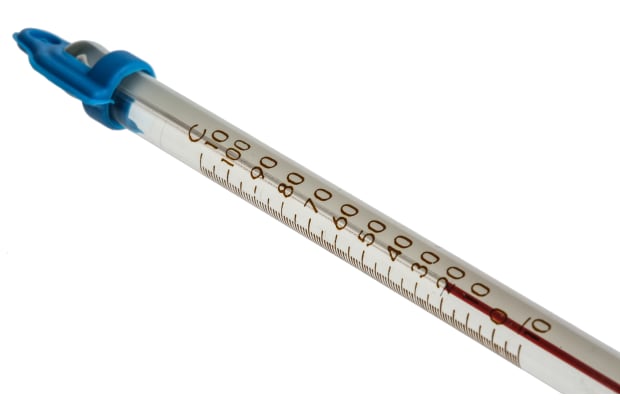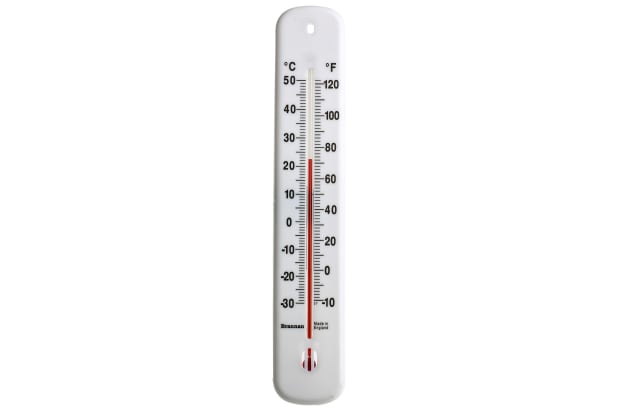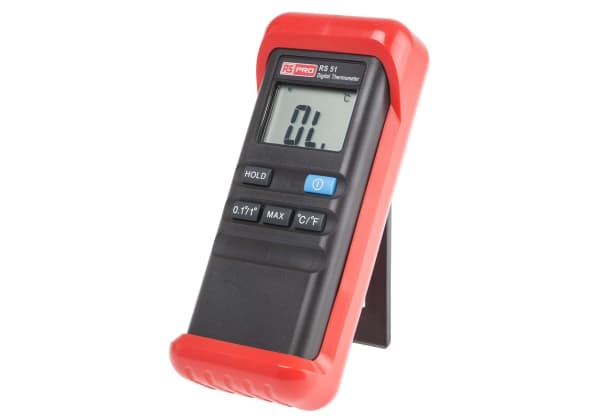- Published 28 Jun 2023
- Last Modified 29 Aug 2023
- 5 min
What is the Liquid in Glass Thermometers and How Do They Work?
Unveiling the intricacies of glass thermometers, this definitive guide explores their composition, usage, accuracy, and the key contexts they excel in.

The heart of any liquid in glass thermometer, as suggested by the name, is the liquid contained within the glass tube. So, what is a thermometer of this sort, exactly?
Traditionally, mercury has been the liquid of choice in most thermometers. This is due to its high coefficient of expansion and ability to remain liquid across a wide temperature range. Hence, when you hear the term mercury thermometer, it refers to a traditional glass thermometer. The mercury temperature ranges from its freezing point of -38.83 degrees Celsius to its boiling point of 356.73 degrees Celsius. This substantial range makes it a popular choice for temperature measurement.
However, recent advances and environmental considerations have led to alternatives for liquid thermometers. One common substitute is an alcohol-based solution, typically dyed for easy visibility. Although mercury and alcohol are the most common, other non-toxic liquids can also be used.
Now, how do these liquid in glass thermometers work? The principle is relatively simple and hinges on thermal expansion. As the temperature around the thermometer increases, the liquid inside the glass tube expands and rises. Conversely, when the temperature drops, the liquid contracts and falls. The height of the liquid column is thus a direct indicator of the surrounding temperature.
How Do Thermometers with Liquid in Glass Measure Temperature?

Understanding the thermometer definition begins with the knowledge of how it measures temperature. Fortunately, temperature measurement using a liquid in glass thermometer is straightforward. Each thermometer has a scale marked along the side of the glass tube, which is used to read the temperature.
To use a thermometer, it should be placed in the environment whose temperature is to be measured. This could be the human body, in the case of a clinical thermometer, or the atmosphere for a weather thermometer. The thermometer should be left in place until the liquid inside adjusts to the ambient temperature. This could take a few minutes.
Once the liquid has settled, the thermometer is checked by observing the level at which the liquid stops. This is the point to measure against the markings on the thermometer. Learning how to read a thermometer correctly is essential. The proper way to use a thermometer is to ensure it is level with the eye. This is to avoid reading errors caused by the angle of observation, a phenomenon known as parallax error.
How Accurate are Glass Thermometers
When considering what is in thermometers and how they function, a key question arises: how accurate are they? The accuracy of a glass thermometer depends on several factors including the quality of its construction, the precision of the scale markings, and the type of liquid used. That said, they are generally accurate. For example, a well-constructed thermometer can be accurate to within one degree. As such, they are often seen as the most accurate thermometers for general purposes.
However, it's worth noting that other types of thermometers, such as digital or infrared models, may provide a higher degree of accuracy in specific circumstances. In addition, they may be easier to read. For instance, a digital thermometer can give a more precise reading than a traditional glass one, particularly when measuring body temperature. It's therefore key to choose the right instrument for the job.
When Can Glass Thermometers Be Used?

Glass thermometers have a wide range of uses due to their versatility, durability, and ease of use. They can be used in a variety of settings, from households and schools to laboratories and industrial environments.
Clinical thermometers are often used in medicine to measure body temperature. In meteorology, they help record weather conditions. In industrial settings, they can be used to monitor processes' temperature, ensuring that they remain within safe and efficient boundaries. They are also commonplace in scientific research, including in experiments that require temperature control or monitoring.
Moreover, they can be used in food preparation where maintaining specific temperature conditions is paramount. In schools, they serve as an excellent tool for teaching about temperature and thermal expansion.
The key is to understand glass thermometer limitations and strengths. While they offer a reliable and robust method of measuring temperature, they are not as quick to adjust to sudden temperature changes as their digital counterparts. Furthermore, there is also the potential hazard of mercury exposure with traditional mercury thermometers, should the glass break.
Summary
In essence, glass thermometers are temperature measurement devices that utilise the principle of thermal expansion of liquids, typically mercury or alcohol, contained in a glass tube. The thermometer works by allowing the expansion or contraction of the liquid to correspond with temperature changes, which is then read off a scale.
Understanding how to use a thermometer involves placing it in the environment whose temperature is to be measured. It involves allowing the liquid to adjust, and then reading the scale at the point where the liquid column has settled. The proper way to use a thermometer and read it is to ensure your line of sight is level with the liquid column. This is to avoid parallax error.
Despite the emergence of digital and infrared thermometers, glass thermometers remain a reliable and accurate thermometer choice for a wide range of applications. From a clinical thermometer in healthcare to industrial and meteorological uses, their simplicity, reliability, and cost-effectiveness ensure their continued relevance in temperature measurement.
In conclusion, the glass thermometer is a versatile, widely applicable instrument, whether you're a clinician measuring body temperature, a chef monitoring the heat of your dishes, or a scientist controlling the conditions of your experiments. Its enduring value lies in its simplicity, robustness, and directness.


